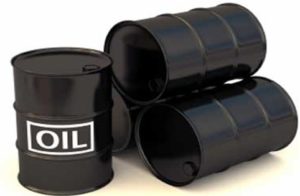Foreign investors planning to invest in Nigeria and other global markets this year are taking a keen look at the nation’s oil output among other factors.
According to a Financial Times’ report, oil supply from the world’s biggest producers will be in focus from the first trading day of January as market participants assess the extent to which countries such as Saudi Arabia and Russia reduce production following a global deal to cut supplies for the first time since the global financial crisis.
There will also be keen interest in the return of the US shale oil and the sustainability of supply recoveries by Libya and Nigeria, conflict-ridden nations that were left out of the output cut agreement.
The outcome of these unknowns will determine when oil supply and demand come into balance in 2017 and whether prices will remain above $50 a barrel.
“Until we start to get answers, the debates will continue,” Michael Wittner at Société Générale, said,
“Until then, we believe that markets will enter a ‘wait and see’ mode; crude prices are likely to start trading within a relatively wide range,” he added.
If OPEC members and co-operating countries such as Russia succeed, they could finally draw down tanks brimming with excess crude — helping to end the commodity supply glut.
The Bloomberg Commodity Index, a basket of 22 futures contracts, rose nearly 12 per cent in 2016, its first annual rise since 2010. Alongside oil, industrial metals such as zinc and copper have also been climbing on hopes that stronger global growth will underpin demand.
Banking equity indices in Japan, Europe and the US posted double-digit gains in the second half of 2016, marking a change of fortunes from earlier in the year when the sector was beset by worries about profitability erosion amid low and negative interest rates, strict regulation and fines for bad behaviour.
According to investors, one of the most important causes for optimism is the prospect of higher interest rates on stronger economic growth as policy gears switch from monetary to fiscal measures in the coming year. Rising long-term bond yields help banks by boosting their net interest margin — the difference between the rates on their borrowing and lending. “We remain broadly bullish on banks as a sector,” a partner at BlueBay Asset Management, Mark Dowding, says.
But the rebound will face a stern test, particularly in Europe where the health of the sector is in question. European banks are on course to be worth 0.68 times analyst estimates for the book value of their assets at the end of 2016. For all the share price movement, the valuation is less generous than it was a year ago.
The last time there was a substantial and rapid rise in the US government bond yields was more than two decades ago — in 1994. At the time, much of the financial world failed to anticipate the speed and pace of rate increases announced by the Federal Reserve — which led the yield on 10-year Treasuries to jump two percentage points in the space of five months.
Copyright Ships & Ports Ltd. Permission to use quotations from this article is granted subject to appropriate credit given to www.shipsandports.com.ng as the source.

